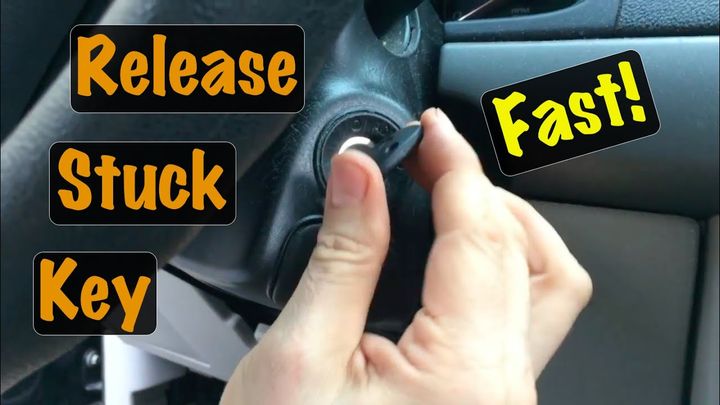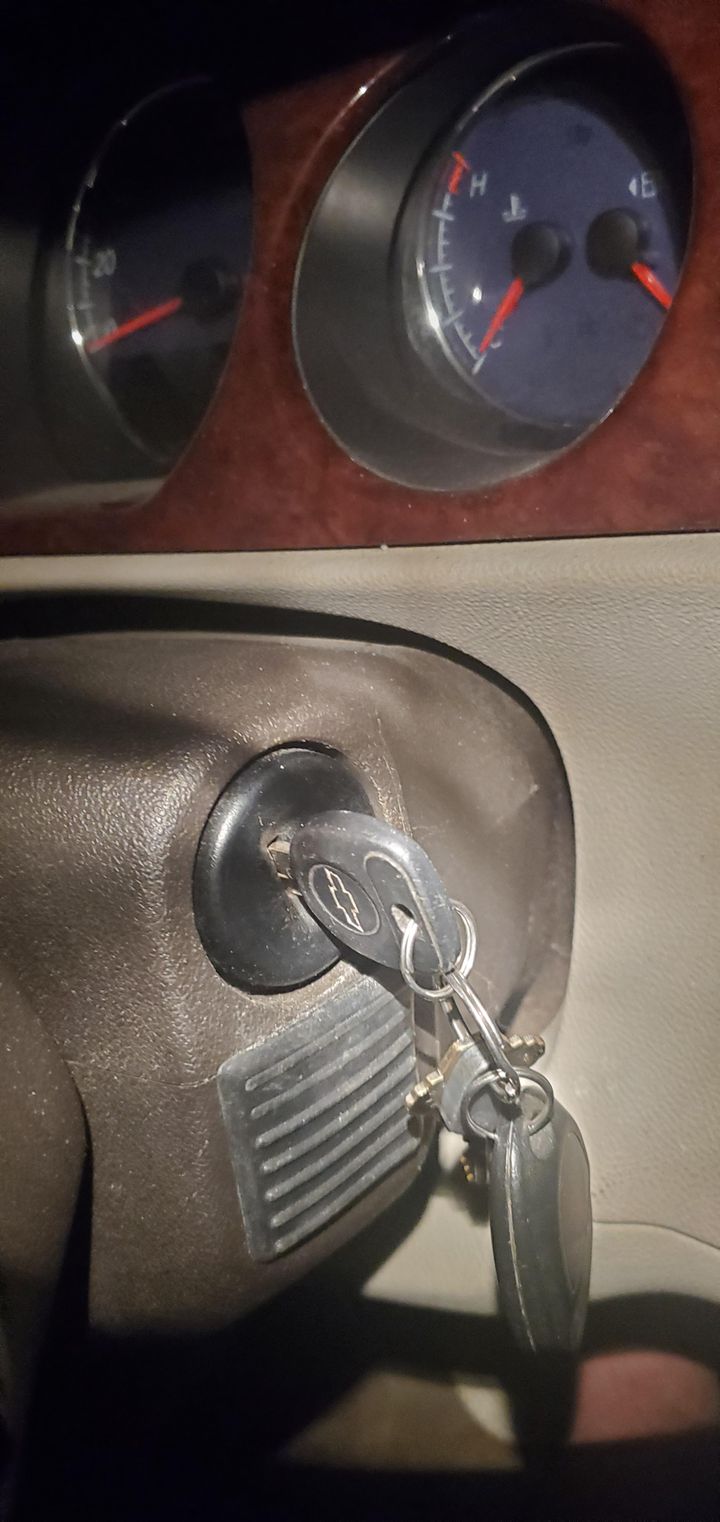


When your car battery dies, it can leave you in a frustrating situation – your key stuck in the ignition. However, there's a straightforward solution to this problem. This guide will walk you through the process of safely removing your key using the manual override mechanism.

The ignition cylinder contains a locking mechanism powered by the battery. When the battery dies, this mechanism fails to release the key, causing it to remain trapped. Attempting to forcibly remove the key can damage the ignition cylinder or the key itself, leading to costly repairs.
The first step is to locate the access panel or door that conceals the manual override mechanism. This panel is typically located underneath the steering column, near the ignition cylinder. It may be a rectangular plastic door or a rubber plug.
To access the override mechanism, you'll need a small flathead screwdriver, a paperclip, or another thin metal object to pry open the access panel or push through the rubber plug.
Once you've opened the access panel, you should see a small white button or cylindrical plunger – the manual override mechanism. Push this button or plunger inward towards the dashboard using your finger or the tool.
While holding the override depressed, attempt to turn the key back towards the "off" or "lock" position. If the override mechanism is functioning correctly, the key should now turn freely, and you can remove it from the ignition.
If the key still feels stuck or bound up, gently wiggle the steering wheel back and forth while turning the key. This motion can help release any binding or tension on the lock cylinder.
After successfully removing the key, replace the access door or plug to prevent debris from entering the steering column area.
Exercise caution when working near the steering column and ignition cylinder. These components are precision parts, and excessive force or improper handling can lead to damage. If you're uncomfortable with the procedure or encounter any difficulties, it's advisable to call for professional assistance.
To avoid finding yourself in a similar situation, promptly replace the dead battery and perform regular battery and electrical system maintenance. Keeping a set of jumper cables in your vehicle can also be a lifesaver in case of a dead battery.
Different types of keys may require slightly different approaches when it comes to removal from the ignition:
| Key Type | Description | Removal Considerations |
|---|---|---|
| Traditional Metal Key | A basic metal key with cut patterns | Typically straightforward to remove using the override mechanism |
| Chip Key | Contains a transponder chip for added security | May require additional steps to disarm the chip before removal |
| Laser-Cut Key | Precisely cut using lasers for a tighter fit | May require more wiggling or finesse to remove from the ignition |
| Fob-Integrated Key | Key integrated with a remote fob | Fob may need to be detached or disassembled for removal |
While a simple flathead screwdriver or paperclip may suffice in many cases, there are specialized tools available that can make the key removal process easier and safer:
Ignition Key Removal Tool Kit
Locking Pliers
Slim Jim Tool
Ignition Cylinder Release Tool
These tools are designed specifically for accessing the override mechanism and manipulating the key without causing damage.
Getting your key stuck in the ignition due to a dead battery can be a frustrating experience, but it's a situation that can be resolved with the proper knowledge and technique. By following the steps outlined in this guide, you'll be able to safely remove your key using the manual override mechanism, regain access to your vehicle, and get back on the road. Remember to exercise caution, use the appropriate tools, and don't hesitate to seek professional assistance if needed. Stay prepared and maintain your vehicle's battery and electrical systems to prevent future lockouts.
There is a locking mechanism powered by the battery that holds the key in place. When the battery dies, this mechanism fails to release the key, causing it to remain trapped.
The manual override mechanism is usually located underneath the steering column, near the ignition cylinder, behind a small access panel or rubber plug.
Common tools like a small flathead screwdriver, paperclip, or other thin metal object can be used to pry open the access panel or push through the rubber plug.
Once the access panel is open, you'll see a small button or cylindrical plunger. Push this inward towards the dashboard to activate the override mechanism.
Gently wiggle the steering wheel back and forth while turning the key. This can help release any binding or tension on the lock cylinder.
Replacing the access panel or plug prevents debris from entering the steering column area, which could cause further issues.
Ignition key removal tool kits, locking pliers, slim jim tools, and ignition cylinder release tools are designed specifically for accessing the override and manipulating the key safely.
Promptly replace a dead battery and perform regular battery/electrical system maintenance. Keeping jumper cables in your vehicle can also help avoid a dead battery situation.
Yes, chip keys, laser-cut keys, and fob-integrated keys may require additional steps or finesse compared to traditional metal keys.
If you're uncomfortable with the procedure or encounter difficulties, it's best to call for professional help to avoid potential damage.

Miguel started tinkering with car radios as a teenager, fascinated by the intricate dance of wires and circuits. This passion led him to pursue a career as an automotive electrician. For the past 10 years, Miguel has tackled everything from flickering headlights to mysterious electrical gremlins. He thrives on troubleshooting electrical problems and enjoys sharing his knowledge to empower car owners to understand their vehicles better.



